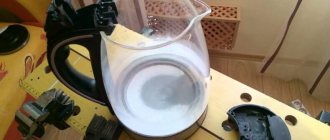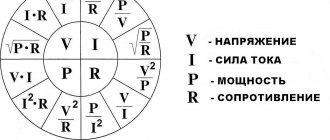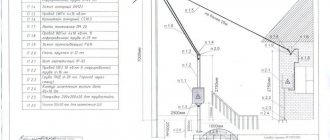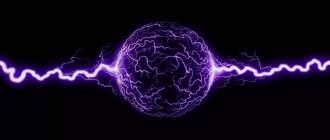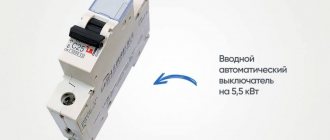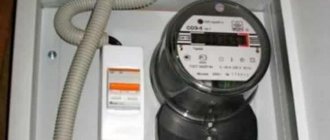An electric kettle is a household appliance that is found in almost every home. The power of the kettle is an important parameter on which the amount of electricity it consumes depends. But this value “jumps” from model to model.
The article will describe how much an electrical appliance consumes for boiling water, and how this is affected by the design features of the equipment: volume of the flask, heating elements. Knowing all the details, it will be possible to make recommendations on how to reduce energy consumption.
What determines the power of an electric kettle?
Although power is a fundamental characteristic, it is necessary to understand that the amount of energy consumed per month depends on many factors:
- flask volume;
- type of heating element;
- water quality, etc.
Power consumption directly depends on the installed heating element. In total, there are 2 types of heating elements used in the production of this type of equipment.
- Open type heating element. Such a heating element is a spiral installed in the device body and in direct contact with the liquid. A device with this type of water heating will make much less noise and perform its task much faster than its “closed” counterpart.
- Closed heating element. Typically, this type of heating element is a special heating plate that is mounted on the bottom of the housing. Although the water heating time and noise level exceed the “open” counterparts, devices with such an element form much less scale.
The average heating time in a kettle with a closed heating element is about 3 minutes. Despite the lower heating rate, modern models are represented by this particular design. Devices with open heating elements heat the liquid a little faster - in 2-2.5 minutes.
Electric kettle parameters
The main parameters of electric kettles include:
Capacity - as a rule, ranges from half a liter to three liters. It is believed that the optimal kettle for a family of 3-4 people is with a 2-liter volume. For one person, a half-liter volume is quite suitable.
Power is the main parameter of an electric kettle. It is he who determines at what speed the water will heat up. For most devices, this figure falls between 0.85 and 1.5 kW. The power required to operate a kettle directly depends on the material used to make it.
Heating element - there are two types:
- Open – when the heating coil is in direct contact with the heated water;
- Closed – does not come into contact with heated water;
Shape and appearance are also important parameters that primarily attract the attention of the consumer. The shape of the electric kettle can be:
- Pitcher-shaped - quite compact and attractive, but, unfortunately, does not hold the heat of water very well.
- Cone-shaped - promotes faster boiling of water and retains its heat for a long time.
Stand and cord - there are two varieties:
- Stationary - allows you to place the kettle in only one position, equipped with a kind of “socket” on which the device is placed;
- “Pirouette” - allows you to freely install in the central part of the stand.
Wire - its length is usually the same for all models. None of the mains-powered models can boast of a long cord. This length for the wire is provided purely for safety reasons. It is very easy to get caught on the long cord or trip over it and knock over the kettle. The short length increases the likelihood of safe use of the kettle, but rather limits the possibilities of its installation, suggesting its installation in close proximity to the outlet.
Electric kettle power
Before purchasing a kettle, you need to determine in advance the power of this equipment. It is necessary to focus on ensuring that it is optimal for the conditions in which the equipment will be operated. It is very important to do this, since the wiring of old houses may simply not withstand the load when several powerful devices are turned on simultaneously.
The characteristics of almost all modern models indicate power from 600 to 3000 watts. This indicator is directly proportional to the volume of the kettle - the larger the size, the higher the power. For the home, models with an indicator of 1500 watts are most often purchased. They can boil 1.5-2 liters of water without any problems. The entire process takes from 2 to 4 minutes. Thanks to these characteristics, these kettle models are very popular.
Electric kettle Braun WK 5110 with a power of 3 kW
If you need a device to quickly heat a larger volume of water, then it is recommended to purchase more powerful kettles with an indicator of 3000 watts. They are able to complete the boiling process in two minutes, so they are in demand among owners of establishments where they sell hot tea and coffee.
It is important to remember that particularly powerful types of equipment can seriously load even the newest wiring, especially when a washing machine or air conditioner is working with them at the same time.
All this leads to the fact that the electrics overheat and fail much faster. And replacing it will cost a large sum. In addition, when there is an overload in the network, automatic protection is triggered. And this can have a negative impact on any electrical equipment in the house.
How to calculate electricity consumption
It is quite simple to understand how much electricity a kettle will consume. To do this, just perform a simple calculation. As a basis, you can take a device with a power of 2000 watts and imagine that it will boil water 4 times a day for 4 minutes. In an hour, such a kettle consumes 2 kilowatts of electricity. Accordingly it turns out:
- consumption per minute - 33.3 watts;
- for 4 minutes of boiling - 133.3 watts;
- consumed per day - 133.3x4 = 533.2 W or 0.53 kW;
- per month it turns out 15.9 kW;
Then you can simply calculate the costs. At a cost of 1 kW of 3 rubles, you will have to pay 1.59 rubles for boiling water, and 47.7 rubles for a month. One boiling will cost about 40 kopecks.
You can use a wattmeter to measure energy consumption
This calculation was made to the maximum, since it did not take into account the fact that when reheating the water is not always brought to a boil. If the average calculation does not suit you, then you can find out the consumption for a specific kettle. To do this you need to do the following.
- Find out the power of the kettle. It is indicated on the box or in the instructions. If there is neither one nor the other, then you can look it up on the Internet.
- After this, you need to measure how long it takes to complete the boiling process.
- Next, 60 minutes is divided by the boiling time (for example, 3 minutes). The result is a coefficient of 20.
- After this, the power of the kettle is divided by the resulting number. Let the device have a rating of 2400 watts, then 2400/20=120 Watts for 3 minutes of boiling. Or 0.12 kW. To get the cost of one boiling, you need to multiply 0.12 by 3 rubles. It will turn out to be 36 kopecks.
- To calculate the cost per day, multiply this figure by the number of boils per day.
Amount of energy consumed
An electric kettle is one of the household appliances that consumes the most electricity. As a rule, its power consumption is from one and a half to three kilowatts per hour.
For example, when using the device five times during the day, when heating or boiling water for three minutes, it will consume about 18 kW in a month. Compared to other household appliances, this figure initially does not seem so high. However, it is worth considering that most appliances can consume approximately the same amount of electricity when working around the clock, unlike a kettle, which is used for such a short time.
Kettle or thermopot – which is more economical?
To find out, you can do an experiment. For this, the following household appliances are taken:
- kettle Bosh TWK 7801;
- thermopot Maxwell MW-1752.
Kettle characteristics: power 2200 W, volume – 1.7 liters. The thermopot has, respectively: 890 W and 6 liters. Testing is carried out using a wattmeter, and the cost of electricity is 3 rubles per kilowatt-hour.
Bosh TWK 7801 kettle and Maxwell MW-1752 thermopot
1.7 liters of water is poured into each device and brought to a boil. It took the kettle 6 minutes to do this. During this time, he spent 0.17 kWh for the amount of 51 kopecks. The thermopot completed this task in 16 minutes, spending 0.39 kW or 1.17 rubles.
However, this calculation is not entirely fair, because the thermopot was originally designed to heat and maintain a high temperature of a large volume of water. Therefore, another experiment is carried out with 6 liters of water. The thermopot boiled it in 40 minutes and 3.15 rubles (using 1.05 kW). It will take about 20 minutes for a kettle to boil the same volume of water. During this time, it will consume 0.6 kW of electricity or 1.8 rubles. The same flow ratio will be if you conduct a daily study.
Although the experiment was very approximate, the following can be seen from it: it is cheaper to boil water using a kettle, but a thermopot is necessary when it is necessary to maintain a high water temperature.
Comparison of capacities of different models
After calculating the electricity consumption, it becomes clear that the kettle “takes” a lot. Accordingly, you will have to pay “tidy” sums for light, and in our calculations - only this device, without other household appliances.
When purchasing, the power indicator should be one of the main selection criteria.
Here is a table comparing the power of electric kettles from popular brands.
| Model | Power, W) | Peculiarities |
| Gorenje K17CLI | 2200 | Disc element, volume - 1.7 l. Stainless steel body |
| Kitfort KT-633 | 2150 | Case - steel, volume - 1.7 liters. Disc heating element |
| Bosch TWK 70B03 | 2450 | The body is glass. Volume - 1.7 l, disk element |
| Gorenje K10BKC | 1630 | Ceramics, disc element. Volume - 1 l |
| DELTA LUX | 1500 | Ceramics, volume 1.5 l. Heating - disc element |
| Scarlett SC-EK14E10 | 1500 | Open heating element, plastic body, volume – 1.5 l |
| Tefal KO 8518 Smart&Light | 1800 | Disc element, steel body. Volume - 1.7 l |
| Philips HD9359 Avance Collection | 2200 | Volume - 1.7 l, body - stainless steel. Disc heating element |
| Kitfort KT-645 | 2200 | Disk element. Volume - 1.7 l, body - stainless steel |
How much do other household electrical appliances consume?
For comparison, here is the average energy consumption of major household electrical appliances:
- washing machine – 20-25 kW/month;
- computer – 30 kW/month;
- refrigerator – 30 kW/month;
- TV - 35 kW/hour.
As you can see, the kettle does not have such a high power consumption. But if you are a little more careful and calculate the amount of time that all devices work, it will become clear that the kettle and iron consume the maximum amount of energy in the minimum amount of time.
Energy consumption table for household appliances
For each home, the number of electrical devices, the value of their electricity consumption and the duration of operation will be different. The table below for energy consumption of household appliances contains average information:
| Device name | power, kWt | Operating time per day, h | Consumption per day, kWh | Consumption per month, kWh |
| Fridge | 0,15-0,6 | 24 | 3,6-8,6 | 10,8-25,8 |
| Lighting (10 lamps 20 W each) | 0,020 | 5 | 0,1 | 3 |
| Washing machine | 1-2,2 | 1 | 1-2,2 | 20-30 |
| Vacuum cleaner | 0,65-2,2 | 15 minutes | 0,16-0,55 | 1,6-5,5 |
| TV | 0,1-0,3 | 5 | 0,5-1,5 | 15-30 |
| Microwave | 1,5 | 30 minutes | 0,75 | 10-15 |
| Electric kettle | 0,7-3 | 15 minutes | 0,25-0,75 | 7,5-16,5 |
| Computer | 0,1-0,2 | 5 | 0,5-1 | 7-20 |
| Iron | 1,1 | 15 | 0,3 | 5-8 |
| Dishwasher | 0,5-2,8 | 1 | 0,5-2,8 | 7,5-15 |
| Multicooker | 0,2-2,4 | 1 | 0,2-2,4 | 2-24 |
| Food processor | 0,2-2,0 | 15 minutes | 0,05-0,5 | 0,5-3 |
| Air conditioner | 0,7-1,3 | 7 | 3,5-8 | 15-35 |
| Hairdryer | 1,2-1,5 | 15 minutes | 0,3-0,4 | 5-7 |
| Heater | 1,5 | 5 | 7,5 | 75 |
| Electric stove | 2-8,5 | 3 | 5-10 | 30-150 |
| Coffee maker | 1,5-3,5 | 15 minutes | 0,3-0,8 | 5-10 |
| Hood | 0,1-0,5 | 3 | 0,3-1,5 | 3-4,5 |
How you can save energy consumption
So, a kettle can be classified as a fairly uneconomical device in terms of energy savings. However, following some recommendations, you can reduce your consumption slightly.
- If you are not using the kettle, unplug it. Even in standby mode, the equipment consumes a certain amount of electricity.
- Boil only the volume of water that you currently need for tea drinking or other purposes. After all, in order to heat 2 liters of water, it will take 2 times more energy than to heat 1 liter. There is no point in pouring water to the maximum level to drink one cup of tea.
- Regularly clean the heating element of the device (and indeed the entire internal surface) of scale. The presence of sediment makes the process of boiling water longer and, therefore, more energy-consuming. In addition, the heating element may generally fail if there is a large layer of scale on it.
- If you think that boiling water on an electric stove is more economical, you are mistaken. In this regard, the kettle benefits significantly - it will heat the water faster and with less energy consumption.
Tips for saving energy consumption
An electric kettle is the most wasteful device. In a short time, it can use much more electricity than a refrigerator and other appliances in the house. These recommendations will help reduce the energy consumption of an electric kettle.
Recommendations:
- You cannot leave the kettle plugged in if it is not currently in use, since even when turned off it uses electricity;
- You should always heat as much as is needed at the moment , because the amount of power consumed depends on the volume of water. For one cup, you should not heat a lot of water or use a thermos, so as not to waste energy;
- The spiral needs to be cleaned regularly , since contamination will cause the water to heat up much longer, thereby consuming more electricity. Also, due to a large amount of scale, the spiral may stop working.
This is where the list of recommendations ends.
Also, you should not think that electrical energy consumption will decrease if you heat water on an electric stove, because in this case the process of heating water will be much longer than in an electric kettle (the heating process takes only three minutes). It follows that energy costs will be much higher.

